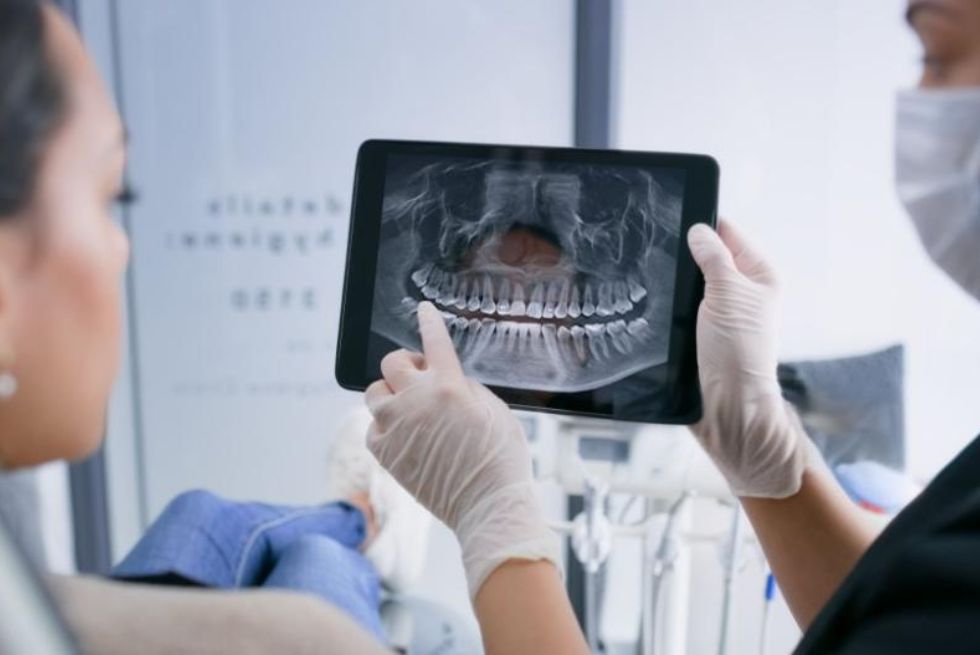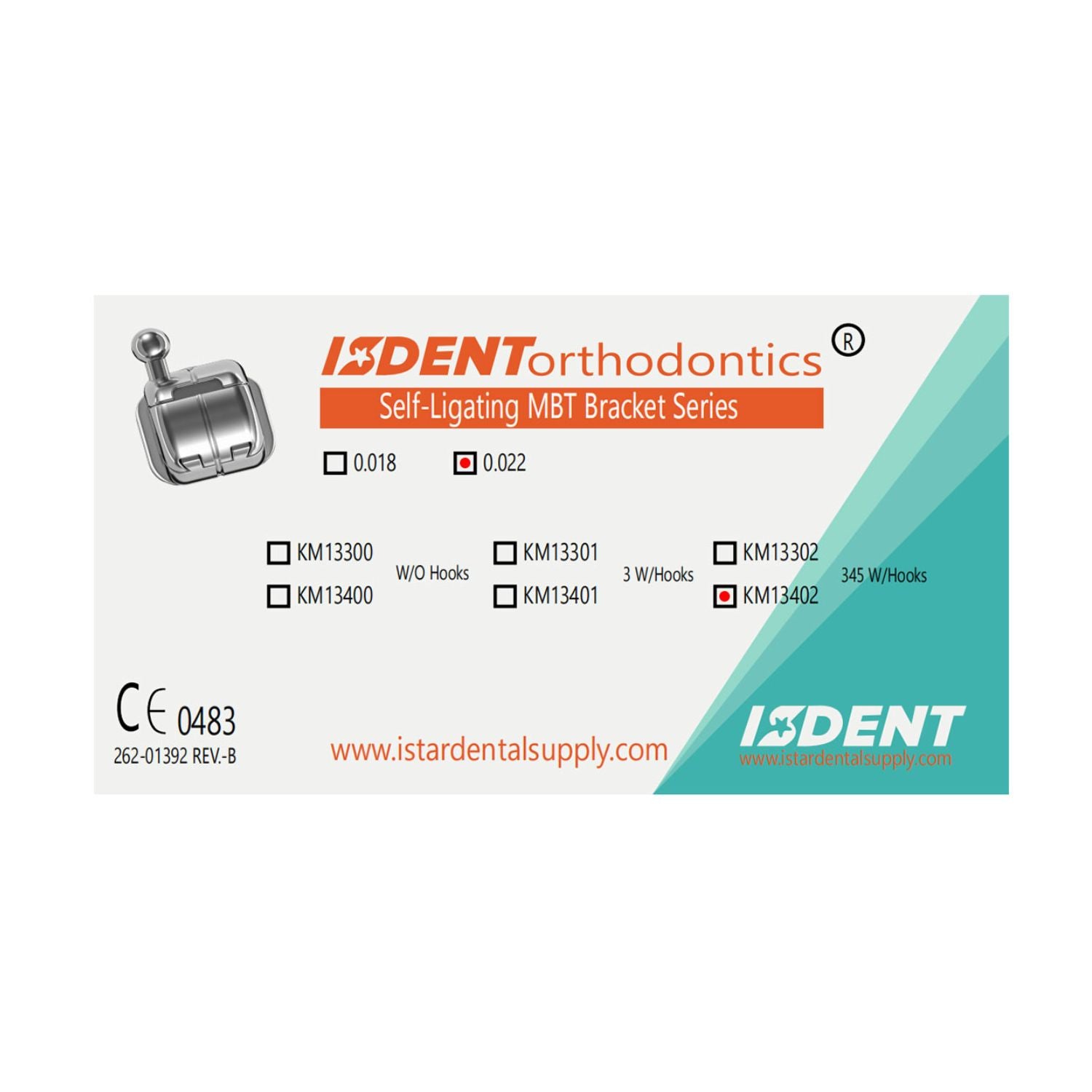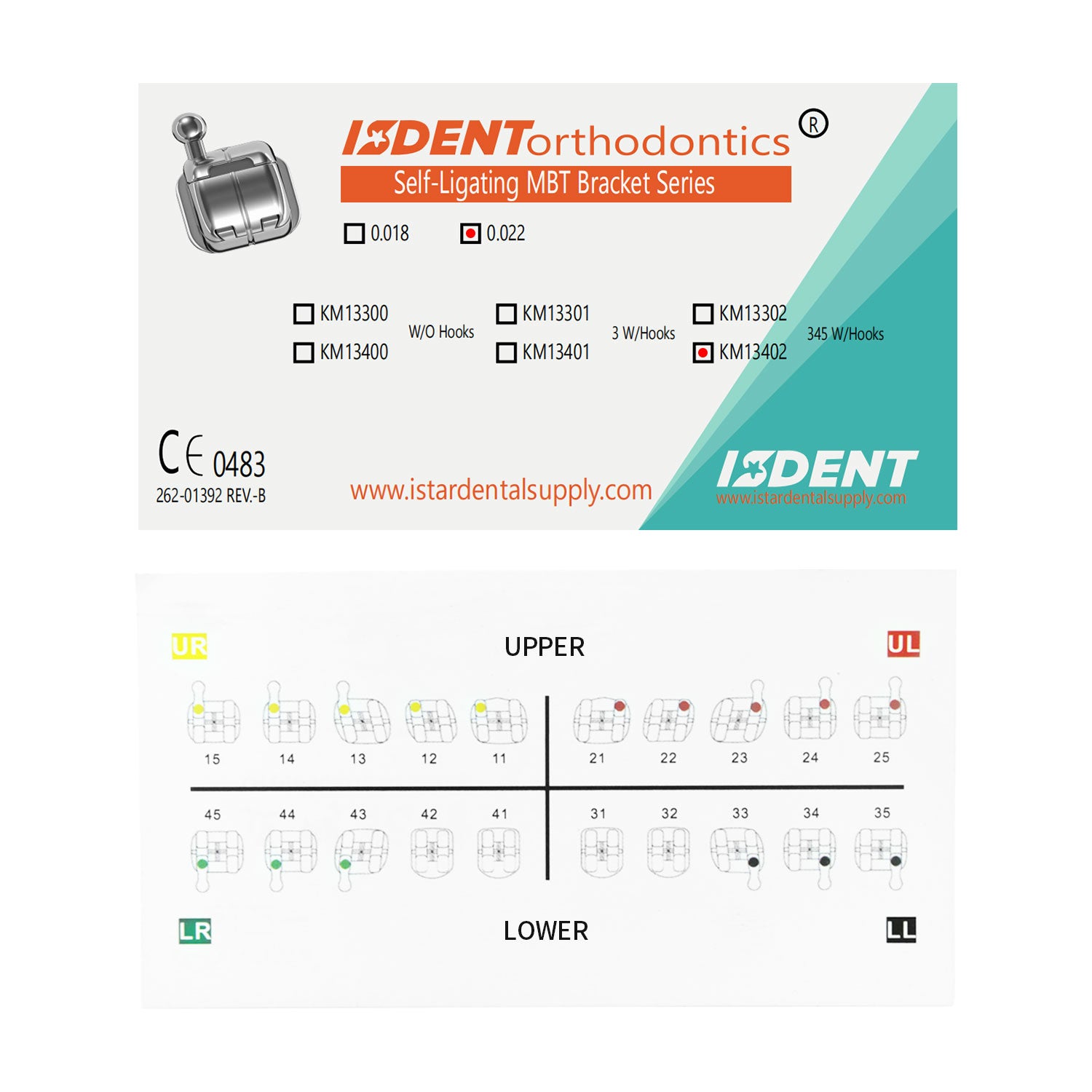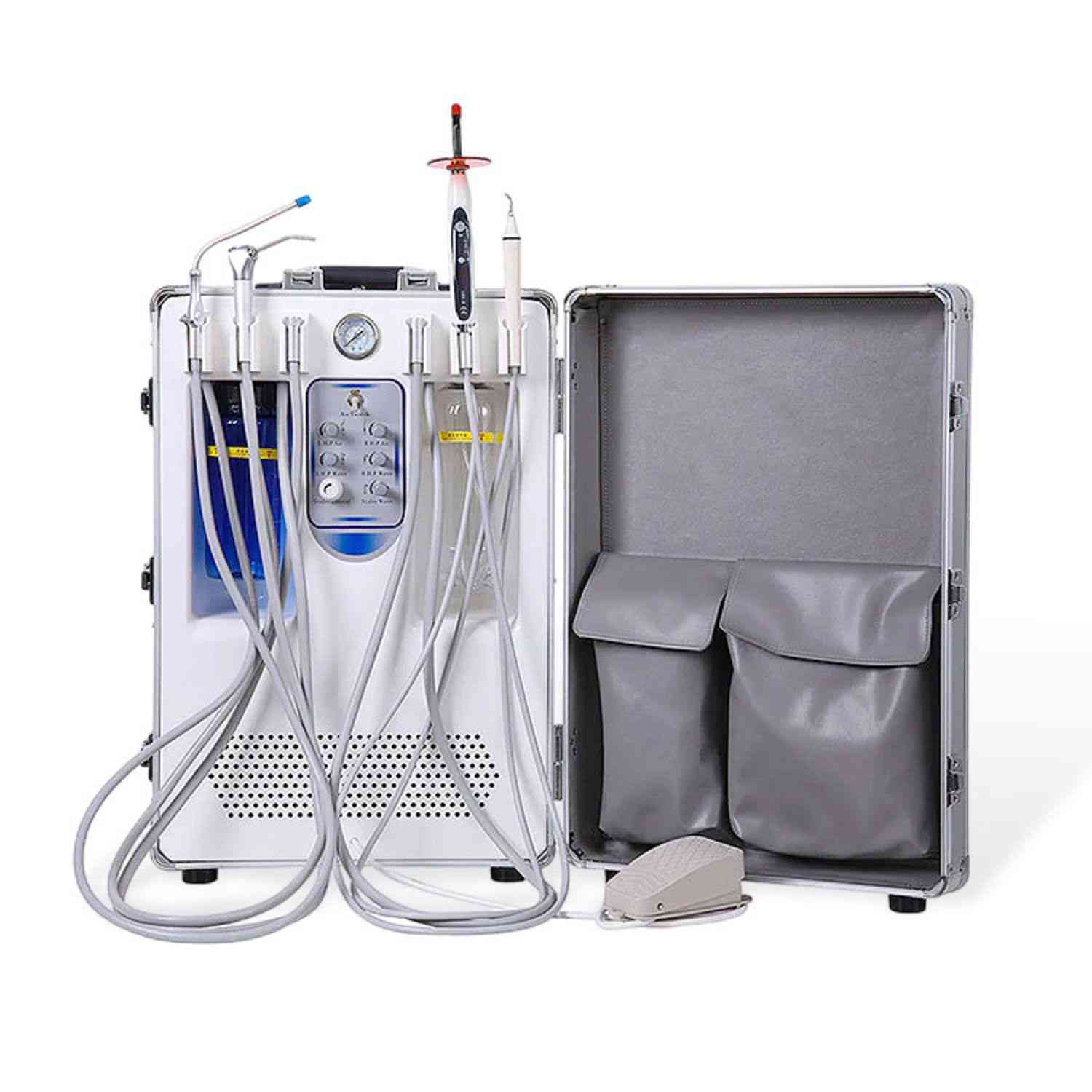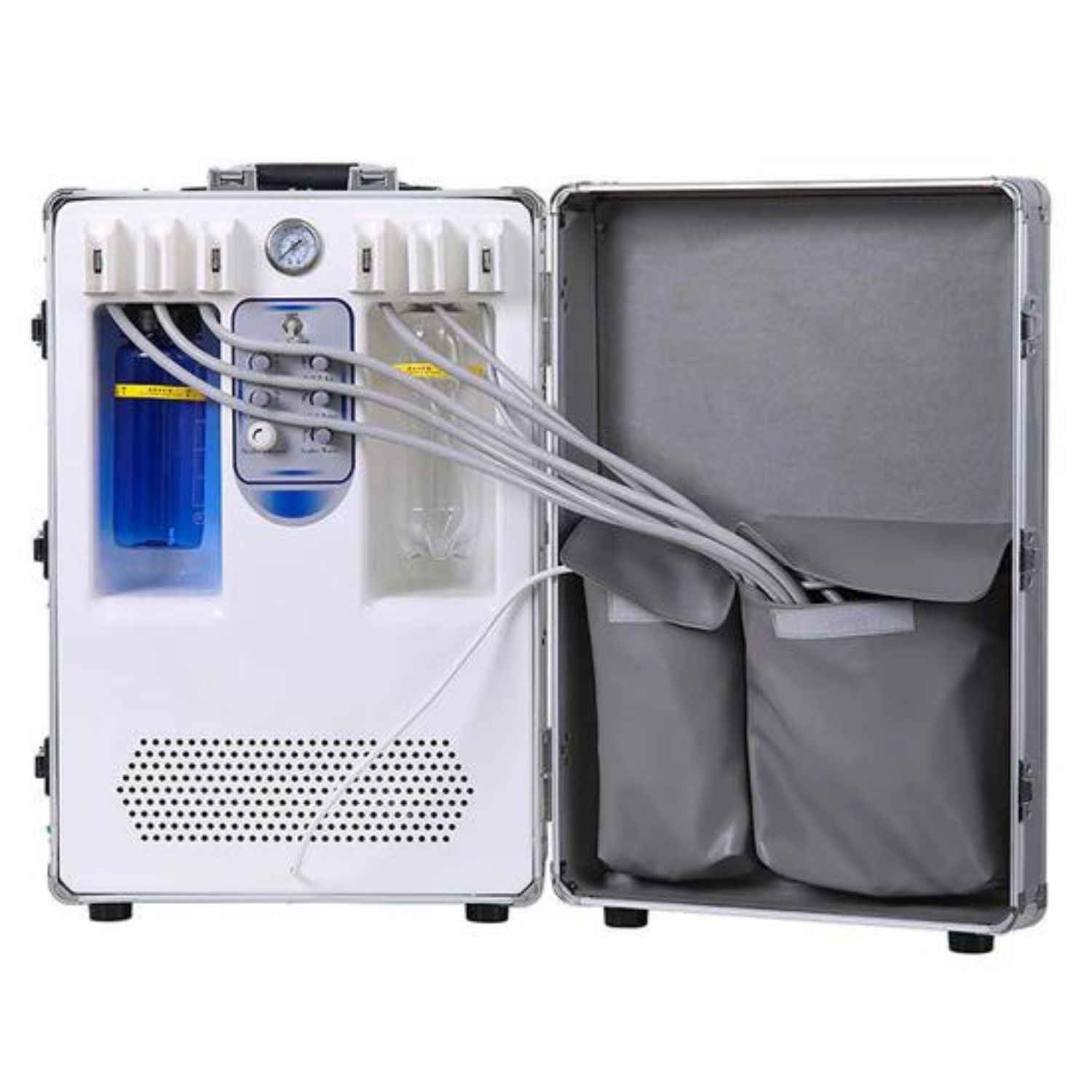Chirurgie buccale : comprendre les différents types d'interventions de chirurgie buccale pour les besoins dentaires courants
La chirurgie buccale désigne toute opération pratiquée sur cavité buccale, dent, ou gomme structures pour répondre à diverses dentaire et les problèmes médicaux. Dans ce guide complet, je vous expliquerai les différents types de chirurgie buccale et souligner pourquoi c'est si important pour l'ensemble santé bucco-dentaireCet article vaut la peine d'être lu car il explique comment chirurgie buccale peut vous aider à surmonter des difficultés persistantes problèmes dentaires, offre des conseils pour une récupération appropriée et vous montre comment conserver un sourire éclatant et sain, le tout grâce à une approche simple, pleine d'espoir et basée sur des données.
Tout au long de cet article, j'utiliserai des informations personnelles, des données du monde réel et des références pour mettre en évidence les étapes, les exemples et les pièges potentiels. dentiste, clinique dentaire, laboratoire dentaire, hôpital dentaire, ou école dentaire, vous trouverez de nombreuses raisons de faire confiance à ISTAR Dental Supply pour vos soins dentaires spécialisés instruments dentaires.
1. Qu’est-ce que la chirurgie buccale et pourquoi est-ce important ?
Chirurgie buccale va au-delà de simplement dent suppression ou adressage cavité problèmes. Dans de nombreux cas, il s'agit d'un type de chirurgie qui traite de la réparation, de la reconstruction ou de l'ajustement tissus mous et structure osseuse dans la bouche et la mâchoire. chirurgien-dentiste qualifié ou chirurgien maxillo-facial peut effectuer une variété de procédures, parfois pour améliorer la fonction ou prévenir d'autres pourriture, et d’autres fois pour améliorer l’aspect esthétique de votre sourire.
Mais pourquoi est-ce important ? La chirurgie buccale dont vous avez besoin peut répondre à de nombreux problèmes urgents :
- Carie dentaire ou une infection qui menace de se propager
- Gomme problèmes qui causent de la douleur ou de l'inflammation
- Dents manquantes qui compromettent l’intégrité de la mâchoire
- Anomalies du visage ou de la mâchoire affectant l'alignement, la parole ou santé bucco-dentaire
Chirurgie buccale ne se résume pas à « réparer les dents ». Il s’agit de prévenir des complications plus larges, de maintenir la santé globale de votre corps et de favoriser un sourire confiant. Lorsque vous faites appel à l’aide d’un chirurgien maxillo-facial, vous entrez dans une expérience transformatrice qui peut améliorer la qualité de votre vie quotidienne.

2. Comprendre les types courants de chirurgie buccale
Avant de discuter de chaque type de chirurgie en détail, définissons types courants de chirurgie buccale.Ces interventions chirurgicales vont souvent de extraction des dents de sagesse trop complexe chirurgie reconstructive. Que vous viviez pourriture ou en quête cosmétique améliorations, il existe de nombreuses solutions différentes disponibles.
Comprend les procédures effectuées par les chirurgiens buccaux ont généralement en se concentrant sur :
- Extraction dentaire (y compris extraction de dent de sagesse)
- Implants dentaires placement
- Os greffer procédures de soutien implant stabilité
- Traitement de canal traitements pour sauver une dent d'une infection
- Chirurgie correctrice des mâchoires pour améliorer l'alignement
- Chirurgie dentaire esthétique des méthodes comme facettes dentaires et plus
Ces types courants des opérations servent de pierres angulaires orale et maxillo-faciale soins. Certaines procédures sont également effectuées par spécialistes dentaires dans des domaines tels que dentisterie esthétique ou dentisterie qui se concentre sur cancer de la bouche projections, gomme maladie et avancée soins dentaires.
Fait: Des études récentes estiment que des millions de dent ou dents des extractions se produisent chaque année dans le monde entier, soulignant que les extractions restent l'un des plus courants des moyens d'aborder les problèmes graves dentaire préoccupations.
3. Quand pourriez-vous avoir besoin d’un type de chirurgie buccale ?
Toi pourrait nécessiter une intervention chirurgicale si vous êtes confronté à des problèmes persistants dentaire complications, infections ou problèmes structurels. Par exemple, un chirurgien buccal peut suggérer une extraction si un cavité a pénétré profondément dans le une partie de la dent près de la racines dentaires, ou si le pourriture est devenu trop avancé pour être traité avec un couronne dentaire ou remplissage.
Consulter un chirurgien buccal est recommandé lorsque :
- Remplacement de dents ou implant l'installation est nécessaire pour dents manquantes.
- Chirurgie esthétique est souhaité pour corriger des problèmes esthétiques.
- Chirurgie maxillo-faciale est nécessaire pour corriger des problèmes d’alignement ou une mâchoire fracturée.
- Tu as dent de sagesse incluse qui encombrent d'autres dent structures.
Il est important de noter que de nombreuses conditions affectant la cavité buccale ne peut pas être entièrement traité par des méthodes non chirurgicales. Une consultation rapide permet d'éviter des complications plus graves.
4. Comment l'extraction dentaire contribue à protéger votre santé dentaire
Extraction dentaire est l'un des plus connus types courants des procédures dans chirurgie buccaleCe processus implique une attention particulière extraction d'un appareil endommagé ou problématique dent, surtout lorsqu'il ne peut plus être sauvegardé par des moyens plus simples procédures dentaires.
Pourquoi se faire extraire une dent ?
- Pour supprimer cavité-monté, gravement délabré partie de la dent
- Pour s'adresser gomme infection ou inflammation qui s'est propagée autour de la dent
- Pour empêcher la propagation de carie dentaire à beaucoup de dents
Lorsque des méthodes traditionnelles comme les obturations ou un canal radiculaire il n’est pas possible de sauver une dent, extraction dentaire devient la prochaine meilleure étape pour préserver l'ensemble santé dentaire. Après votre extraction, un les chirurgiens ont généralement recommande de placer un pont dentaire, implants dentaires, ou même dent artificielle des solutions pour remplacer ce qui a été perdu.
Statistique: Selon l'Association américaine des chirurgiens buccaux et maxillo-faciaux, extraction a tendance à avoir un taux de réussite élevé avec des complications minimes, à condition que les patients suivent les directives de soins prescrites.

5. Implants dentaires et dents manquantes : une solution qui change la vie
Rien ne revitalise un sourire comme implants dentaires. Un implant est un minuscule accessoire métallique placé chirurgicalement dans la mâchoire pour maintenir l'implant en place, agissant comme une base stable pour dents de remplacement. Cette procédure constitue une chirurgie dentaire courante qui offre des avantages fonctionnels et esthétiques.
Pourquoi choisir les implants dentaires ?
- Les implants dentaires sont utilisés pour ancrer une seule dent ou multiple remplacements prothétiques.
- Ils favorisent la rétention osseuse dans la mâchoire, prévenant ainsi l’atrophie.
- Ils permettent une morsure naturelle et des expériences de mastication confortables.
Les personnes atteintes dents manquantes ressentent souvent une gêne au niveau de la mâchoire, une baisse de l'estime de soi et des difficultés à mâcher. Les implants peuvent transformer la qualité de vie en offrant une solution durable et naturelle. Dans de nombreux cas, un implant osseux greffer est essentiel pour soutenir la implant si la densité osseuse de la mâchoire est insuffisante. Chirurgie buccale et maxillo-faciale les équipes gèrent ces étapes de manière transparente, garantissant ainsi un taux de réussite élevé.
6. Extraction des dents de sagesse : pourquoi c'est l'une des procédures les plus courantes
Quand on parle de types courants de chirurgie buccale, extraction de dent de sagesse est souvent en tête de liste. Dents de sagesse peuvent être impactés, ne pas éclater complètement ou même pousser dans la mauvaise direction, provoquant une douleur intense et un désalignement potentiel des zones environnantes. dent structures.
Signes indiquant que vous pourriez avoir besoin de faire extraire vos dents de sagesse
- Gêne persistante au niveau de la mâchoire ou difficulté à mordre
- Gonflement ou infection autour des molaires du fond
- Maux de tête chroniques causés par un mauvais alignement
Avoir votre dent de sagesse retirée survient généralement à la fin de l'adolescence ou au début de l'âge adulte. Au cours de cette type de chirurgie dentaire, un le chirurgien buccal évaluera la position de dents de sagesse incluses et déterminer si une solution simple ou plus complexe extraction est nécessaire. Avec des techniques modernes, chirurgie utilisant de petites Grâce aux incisions et aux options de sédation, de nombreuses personnes ressentent peu ou pas de douleur pendant et après la procédure.

7. Explication du traitement de canal et d'autres procédures dentaires
UN canal radiculaire est souvent mal comprise. Certaines personnes l'associent à une douleur intense, mais en réalité, la procédure est conçue pour sauver une dent d'une infection étendue. Au cours d'une canal radiculaire, le à l'intérieur d'une dent est nettoyé, désinfecté et scellé pour éviter d'autres dommages. C'est une partie standard de dentisterie qui peut faire une énorme différence dans santé bucco-dentaire.
Autres interventions dentaires notables
- Chirurgie dentaire esthétique: Tel que facettes dentaires pour améliorer l'apparence de votre sourire
- Gomme chirurgies : pour éliminer une maladie ou corriger une récession
- Extraction de dents pour des problèmes de surpopulation
Ces procédures dentaires vont du médicalement nécessaire au purement cosmétique.Quelle que soit l’approche, une chirurgie buccale courante l'étape suivante consiste en une consultation approfondie avec un dentiste ou chirurgien buccal, vous assurant d'obtenir le meilleur plan de traitement.
8. Récupération et perspectives après une intervention de chirurgie buccale
Reprise et perspectives après une intervention, qu'elle soit simple extraction ou un types d'interventions de chirurgie buccale comme chirurgie de la mâchoire—dépend de nombreux facteurs. Certaines procédures Certains nécessitent plus de temps d’arrêt, tandis que d’autres peuvent vous permettre de reprendre une activité normale en quelques jours.
Conseils postopératoires clés
- Suivez votre chirurgien buccal ou dentiste instructions sur le repos et les médicaments.
- Gardez le site d'extraction ou la zone chirurgicale, nettoyer avec les rinçages recommandés.
- Commencez par privilégier les aliments plus mous pour éviter d'irriter la peau. extraction emplacement.
- Évitez les exercices intenses ou le levage de charges lourdes, car cela pourrait prolonger le temps de guérison.
- Maintenir une excellente hygiène bucco-dentaire pour se protéger contre l'infection.
Pendant le processus de guérison, vous pourriez ressentir un léger gonflement, une douleur ou un inconfort, qui sont généralement gérables avec des analgésiques prescrits. Il est essentiel de rester en contact avec votre professionnel de la santé* si quelque chose semble hors de l’ordinaire.
Citation d'expérience : « Quand j'ai fait remplacer ma dent unique par une implant« J’ai été étonné de la rapidité avec laquelle j’ai pu mâcher et sourire sans aucune douleur, bien mieux que ce à quoi je m’attendais ! »

9. Chirurgie correctrice de la mâchoire et chirurgie reconstructive : amélioration de la structure osseuse
Quand chirurgie buccale et maxillo-faciale s'étend au-delà du simple cavité problèmes ou extraction dentaire, vous pouvez rencontrer chirurgie correctrice des mâchoires ou chirurgie reconstructive. Ce type de chirurgie buccale vise à corriger les désalignements squelettiques, les blessures traumatiques et les maladies congénitales.
La chirurgie traite les affections qui affectent:
- Alignement de la mâchoire et morsure
- Symétrie faciale
- Fonction articulaire de la mâchoire
En repositionnant ou en remodelant les os de la mâchoire, orale et maxillo-faciale Les spécialistes permettent une meilleure mastication, une meilleure élocution et une apparence faciale plus équilibrée. Certaines formes de chirurgie reconstructive peut aussi être cosmétique, mais elles ont souvent des conséquences qui changent la vie en termes de déglutition, de respiration et de confort quotidien.
10.Pourquoi choisir ISTAR Dental Supply pour vos instruments de chirurgie dentaire ?
Permettez-moi de me présenter : je représente Fournitures dentaires ISTAR—usines de fabrication pour fournitures dentaires produits. Notre mission est d'aider chaque dentiste, clinique dentaire, laboratoire dentaire, hôpital dentaire, et école dentaire s'équiper pour interventions courantes de chirurgie buccale et des soins aux patients de premier ordre.
Qu'est-ce qui distingue ISTAR Dental Supply ?
- Équipement dentaire de haute qualité:Des outils essentiels aux machines technologiquement avancées, nous maintenons des normes qui s'alignent sur chirurgie buccale et maxillo-faciale meilleures pratiques.
- Catalogue complet:Que vous ayez besoin d'un système efficace Équipement dentaire ensemble ou spécialisé Pièce à main chirurgicale, nous proposons une gamme de solutions.
- Puissance industrielle mondiale:En tant que fabricants à grande échelle, nous garantissons une production constante et une expédition rapide, quel que soit votre emplacement.
- Des outils innovants:Vous cherchez à mettre à niveau votre flux de travail numérique? Découvrez notre Scanner intraoral dentaire 3D et découvrez comment notre imagerie avancée vous aide à planifier type de chirurgie dentaire avec précision.
- Systèmes de stérilisation haut de gamme:Nous accordons la priorité à la sécurité avec des offres telles que notre Autoclave dentaire unités et Nettoyeur à ultrasons dentaire.
Lorsque vous vous associez à Fournitures dentaires ISTAR, vous investissez dans une technologie de pointe et éprouvée qui peut transformer le flux de travail de votre clinique. Nous sommes là pour vous aider à mieux servir les patients, à rationaliser les procédures complexes et à garantir le succès remplacement de dents ou cosmétique améliorations.
FAQ
Comment savoir si j’ai besoin d’une chirurgie buccale?
Toi besoin d'une chirurgie buccale si votre dentiste ou chirurgien buccal diagnostique un problème, comme un problème avancé carie dentaire, un désalignement grave, ou dents manquantes—qui ne peut pas être résolu avec les méthodes traditionnelles dentaire des traitements tels que des obturations ou des couronnes.
La chirurgie dentaire esthétique est-elle couverte par l’assurance ?
La couverture dépend souvent du fait que le cosmétique Le traitement a également une fonction réparatrice ou médicalement nécessaire. Vérifiez toujours les détails spécifiques de votre police d'assurance ou consultez votre assureur.
Puis-je retourner au travail le lendemain d’une extraction dentaire ?
De nombreuses personnes retournent au travail au bout d’un jour ou deux, bien que des interventions chirurgicales plus importantes (comme chirurgie correctrice des mâchoires) peut nécessiter des temps d’arrêt supplémentaires.Suivez attentivement les conseils de votre équipe chirurgicale.
Pourquoi l’extraction des dents de sagesse est-elle si courante ?
Dents de sagesse apparaissent généralement plus tard dans la vie et peuvent être dents de sagesse incluses, croissant contre les voisins dent structures ou de votre mâchoire. Cela entraîne des douleurs, des infections et un mauvais alignement, ce qui rend les extractions de sagesse très orale commune procédure.
Que faire si j’ai peur de consulter un chirurgien-dentiste ?
Il est normal de se sentir inquiet. Parlez-en à votre chirurgien buccal Informez-vous à l'avance sur les options de sédation et les détails de la procédure. Une clinique réputée discutera de chaque étape pour s'assurer que vous êtes à l'aise.
Quel type de chirurgie buccale est le plus courant ?
Simple extractions (y compris extraction des dents de sagesse) et implants dentaires sont parmi les plus fréquemment pratiquées, compte tenu de leur prévalence dans le traitement dentaire défis.
Principaux points à retenir
- Chirurgie buccale se réfère à toute opération qui aborde les aspects fonctionnels ou cosmétique problèmes dans la bouche et la mâchoire.
- Types courants d'implants intrabuccaux procédures inclure la dent extraction, implants dentaires, canal radiculaire, et chirurgie de la mâchoire.
- UN chirurgien maxillo-facial ou chirurgien buccal peut traiter des conditions complexes comme le désalignement, cancer de la bouche, et chirurgie reconstructive besoins.
- Reprise et perspectives Les résultats peuvent varier, mais la diligence dans les soins postopératoires garantit les meilleurs résultats possibles.
- Fournitures dentaires ISTAR fabrique non seulement des produits de haute qualité produits mais fournit également un accompagnement personnalisé pour dentiste bureaux, laboratoire dentaire environnements et hôpital dentaire configurations.
- Depuis instruments dentaires Grâce à des outils de numérisation avancés, nous vous aidons à fournir des soins de premier ordre à chaque étape du processus.
Si vous recherchez une solution fiable dentaire solutions, qu'elles soient avancées chirurgie dentaire équipements, unités de stérilisation haut de gamme ou gadgets spécialisés pour types d'intrabuccal procédures—Contactez ISTAR Dental Supply pour découvrir comment nous pouvons soutenir votre pratique. Nous sommes là pour être votre partenaire et vous aider à obtenir des résultats exceptionnels pour vos patients tout en rationalisant votre flux de travail clinique.N'hésitez pas à visiter nos vastes gammes de produits pour Orthodontie, Unité dentaire, ou explorez le haut de gamme Appareils de radiographie dentaire et plus encore. Collaborons pour créer un avenir plus sûr et plus sain pour tous.

